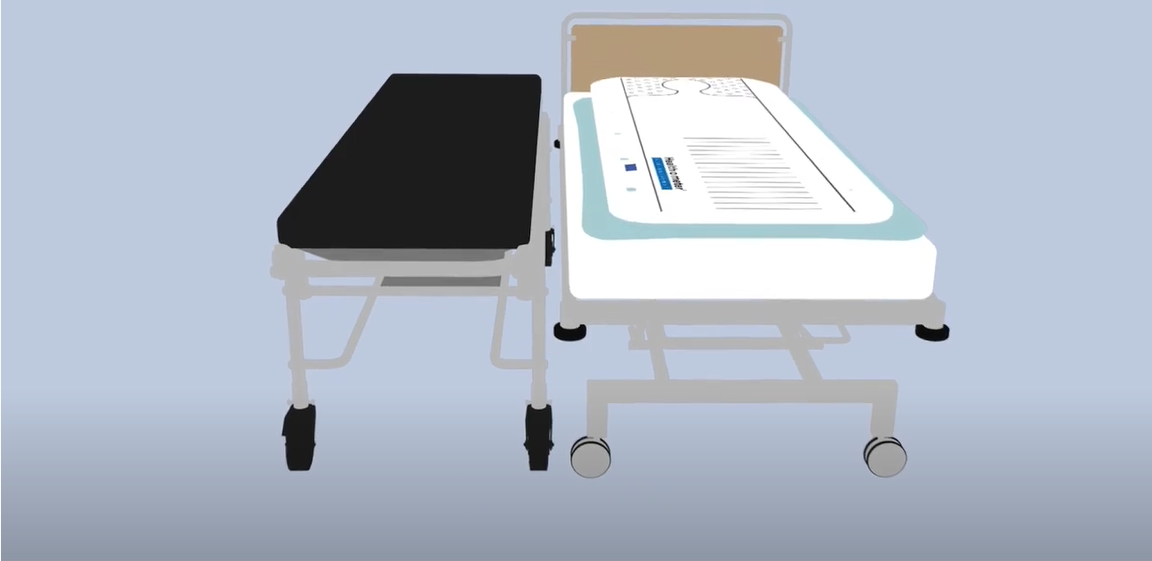Acquiring a critical or immobile patient’s weight is not easy. It takes time and disrupts clinical workflow. Despite the difficulties in obtaining weight measurements, a patient’s body weight is a critical measurement in calculating the appropriate dosage of life-saving drugs.
In addition to providing patients with the proper drug dosage, drugs need to be administered quickly as in some cases - every minute is a factor in a patient’s outcome. Faster treatment is also a goal of Process Improvement teams, as hospitals across the country are focused on shortening door-to-needle times to meet the American Heart Association 2020 credentialing guidelines, and to be designated as a “Stroke Honor Roll Elite Plus” certified institution.
The Three most Commonly-Used weighing methods
Currently, the three most commonly used options for weighing time-critical, immobile patients are weighing beds, hoist scales, and estimation. However, these methods are problematic as they are difficult to use, time-consuming, inaccurate, and uncomfortable for the patient.
Typically most emergency rooms or stroke centers will weigh immobile patients using a stretcher or a bed with a weighing scale inside of it. This is not a reliable solution; weighing beds are not always available, as they are often in use or have been moved. Clinicians are not confident in the use of weighing beds as they can be inaccurate due to not being calibrated regularly or properly zeroed before use.
In some instances, using a weighing bed can increase the number of patient transfers. In the case of an immobile stroke patient, the patient is transferred from an EMS stretcher to a weighing bed and then over to a CT scanner. This extra transfer is a risk to the patient’s safety and a burden on staff’s physical health. Lastly, weighing beds can be very expensive, costing over $15,000 in many cases.
Another less common option to weigh immobile patients is to use a hoist scale. Hoist scales lift patients from a bed to obtain a weight measurement. These scales are not a popular choice as they are difficult to use and time-consuming, as well as being uncomfortable and stressful for the patient. Obtaining a weight using a hoist often involves several steps to set up the scale and properly position the patient, and as previously stated, these patients need to be treated quickly as every minute counts.
A third method used to obtain the weight measurement of an immobile patient is estimation. Staff can estimate weight by what is told to them by the patient or by a visual estimate. But estimation is not accurate and can be very dangerous when weight is used to determine drug dosing. The drugs commonly used in the ICU are dosed based on precise patient weight, and an over- or underestimated weight measurement can lead to fatal drug levels or inadequate treatment. Weight estimation should only be considered as a last resort when time is critical to providing life-saving treatment.
It is evident that a more efficient and accurate method of weighing immobile patients would provide better patient outcomes, enhance workflow, and reduce the burden on staff.
How to ensure safety, accuracy, & Efficiency
As a leading manufacturer in the healthcare market, Health o meter® Professional Scales focuses on developing and introducing healthcare products that can make marked improvements on patient care and outcomes. To help healthcare facilities overcome the challenges of weighing immobile patients, Health o meter® Professional Scales now offers the Patient Transfer Scale.
The new PTS-1000KL is an innovative piece of equipment that combines a transfer board with a weighing scale inside, allowing clinicians to quickly and accurately weigh immobile patients without changing their workflow. This easy-to-use scale can not only be quickly zeroed for immediate use, but it is also always available using its convenient wall-hanging stowing system, and it decreases the number of patient transfers.
All departments in the hospital can benefit from the Patient Transfer Scale, particularly Stroke Units, the Emergency Room, ICU, and Radiology. In addition to the practical benefits, the Patient Transfer Scale is also an effective cost-saving alternative to other weighing options. To learn more about the Patient Transfer Scale, contact your CME Account Manager.
CME has partnered with Health o meter® to offer a broad portfolio of their digital and specialty scales. Your dedicated CME representative is trained to understand your needs and to help you find the best solution. Contact us today to discuss how we can assist you in your weighing protocols.
About CME: CME Corp is the nation’s premier source for healthcare equipment, turnkey logistics, and biomedical services, representing 2 million+ products from more than 2,000 manufacturers.
With two corporate offices and 35+ service centers, our mission is to help healthcare facilities nationwide reduce the cost of the equipment they purchase, make their equipment specification, delivery, installation, and maintenance processes more efficient, and help them seamlessly launch, renovate and expand on schedule.
About Health o Meter Inc.: Since 1919, Health o meter® Professional has provided the medical community with high quality, innovative digital and mechanical healthcare scales. Health o meter® scales are designed with healthcare professionals in mind, to offer functionality that best serves their needs. Explore their products and learn more about product lines, EMR connectivity solutions and professional advantages. Health o meter® is dedicated to providing medical professionals with the best weighing scales.


